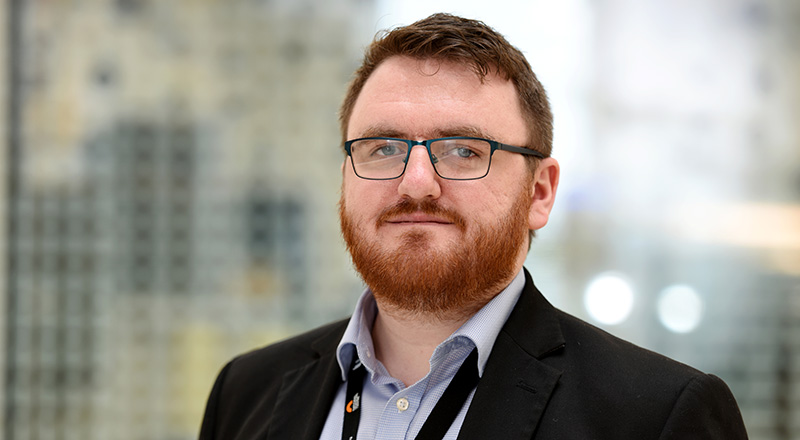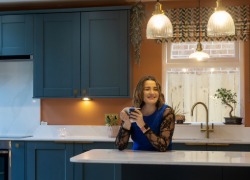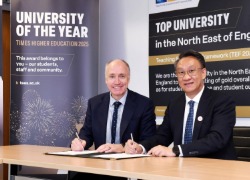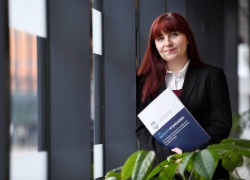Meet Dr Alexander Newman
By
Dr Alexander Newman
Scientific Experimental Officer
An interest in genetics led Dr Newman to a career in cancer research. He speaks about his work to improve treatments and survival rates for children with aggressive lymphoma.

What is the basis of your research?
My research involves sequencing the DNA of tumour samples taken from children with cancer, primarily a rare form called Burkitt Lymphoma. Currently, children who are unlucky enough to be diagnosed with Burkitt Lymphoma need very high doses of many chemotherapy drugs to fight the cancer. Thankfully, these drugs are highly effective and over 95% of patients go into remission and remain cancer-free. However, these drugs have awful side effects on the children, some of which will have long-term consequences that stay with the child for life. As well as this, for the 5% who are not cured with this treatment, the outcome is dire.
My research is focused on improving the way we treat these children by improving the effectiveness of the treatments we can give, but also reducing the doses of certain drugs for patients who don’t need them to reduce side effects. We recently discovered that mutations in a gene called TP53 were present in the tumours of about half of all children with Burkitt Lymphoma but, interestingly, the children with the tumours that didn’t have these mutations did really well on existing treatment and were all cured. I believe it’s likely that these patients may be candidates for reduced therapy; they may still be cured with a lower dose of chemotherapy and experience fewer side effects. My work involves looking into the DNA of these tumours to look for more markers that might be usable to differentiate patients for treatment and improve cure rates.
What does your average day look like?
My days vary quite a lot; sometimes I spend the whole day in the lab while on others I can be at my desk for most of it.
When we receive new tumour samples from one of our partner hospitals across the UK, I’ll store it in our -80°C freezer before taking it to the lab to process it. This involves cutting small sections of the tumour with a machine called a cryostat. This keeps the sample frozen while we cut tiny slices of it. I’ll then mash up these slices of tumour into a liquid buffer using ceramic beads and a homogeniser. The sample is then in a liquid form which means we can purify the DNA and RNA from it. We separate out the DNA and RNA first of all using special membranes and clean them using different buffers and enzymes to break down leftover proteins. At the end of this process, I’ll check the concentration of the DNA collected using a machine called the Qubit and then measure the RNA in a similar way with the Tapestation. I’ll note these numbers down in my lab book and put the DNA and RNA in the freezers for storage until I need them later on.
Other days I’ll sequence the DNA I collected previously. I’d usually take eight samples out together and prepare the libraries that the sequencer will analyse. These libraries, depending on the work I’m doing, will be bits of the genome I’ve picked out using primers and a PCR reaction and labelled with barcodes so I know which sample they’ve come from after sequencing. The library preparation can take a few hours, or even a couple of days in some cases. Once this is done, the samples are loaded onto the sequencer and it is left to run for about 24 hours. When I come back the next day, I have lots of data to download and analyse.
What inspired your research?
Even back in secondary school I was interested in genetics and genomics. I loved learning about inheritance, sequencing and how DNA determines the characteristics of all living things. At university, I learned how important genomics was in the research of diseases, particularly cancer. I was lucky enough to be able to do a master’s project where I got hands-on experience with genomic data analysis in cancer. My work to improve the lives of patients with cancer was also driven by the experiences of friends and family who had been diagnosed with cancer. In particular, this was inspired by the experience of my mum, who was diagnosed with a brain tumour during my PhD, and died before I was finished. She had a form of brain tumour where we still don’t have effective treatment and most patients die. I remember what treatment she did receive did to her, and I hoped that one day I’d be able to spare more people that experience.
What do you hope to achieve?
I hope to find a gene, or panel of genes, which can give us more tools to treat children with cancer. We know different drugs work better against some cancer types than others, and this is usually down to the genetics of the cancer itself. Understanding the genetics of each subtype of cancer better may highlight other drugs which might be beneficial to patients.
What would you say to someone who is wanting to study science?
If you think you might want to be a scientist, that’s great. Think about what you find most interesting about science; after all it’s a huge field. Follow what you enjoy and what you think is interesting. Don’t worry too much if you’re unsure exactly what you want to do – you’re not locked into working in a particular field. Scientists change their focus all the time.
 Start the new year by expanding your knowledge
Start the new year by expanding your knowledge  Teesside University strengthens long-standing partnership
...
Teesside University strengthens long-standing partnership
... Teesside academic leads the way in setting professional
...
Teesside academic leads the way in setting professional
...